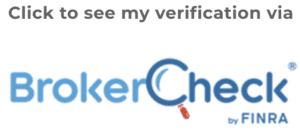Employee Retention Makes or Breaks Company Success
Recruiting and retaining top employees has always been one of the greatest challenges for business owners. Key employees—such as operations managers, sales leaders, and logistics coordinators—are often the driving force behind business growth and long-term success. However, in today’s talent-driven economy, top employees want more than a paycheck—they want benefits that genuinely support their families and their future.
For many owners, the typical strategies for rewarding employees feel limiting. Offering equity dilutes ownership and introduces complex governance issues. Setting up qualified retirement plans such as 401(k)s or pensions can be expensive, heavily regulated, and must generally be offered to all employees, not just a select few.
Forward-thinking business owners are increasingly turning to Executive Bonus Plans (also known as Section 162 bonus plans) to reward their top employees with meaningful value and demonstrate long-term support. They provide a straightforward, flexible way to reward key contributors while giving the business a current-year tax deduction and avoiding the administrative burden of ERISA-qualified plans. Even better, they can be tailored to fit the specific needs of both the business and the employee.
What Is an Executive Bonus Plan?
With an executive bonus plan, a business rewards key employees by funding a cash value life insurance policy in their name. It is a flexible compensation strategy with three key components:
- Employer Contributions: The business pays the premiums on a permanent life insurance policy owned by the employee. These contributions are treated as taxable income to the employee but are deductible for the business as compensation.
- Employee Ownership: The employee owns the policy outright. That means they choose the beneficiary, have access to the cash value, and receive the death benefit protection.
- Tax Treatment – While the premium is taxable income to the employee, the policy’s cash value grows tax-deferred, and loans or withdrawals (structured properly) can provide tax-advantaged access to funds. The death benefit is generally income tax-free to beneficiaries.
This approach is a long-term investment in the success of vital team members. The employer gets a tax deduction and a powerful retention tool, while the employee gains an asset with both living and legacy value.
Why Businesses Choose Executive Bonus Plans
Many traditional benefits don’t allow employers to target only critical employees. Retirement plans require broad participation and compliance with ERISA, while equity offerings can dilute ownership or complicate succession planning. Executive bonus plans have several advantages over other methods of rewarding employees.
1. Simple to Implement
Unlike qualified plans, there are no complicated government filings, discrimination testing, or rigid contribution rules. The plan is established with minimal paperwork, usually just a corporate resolution and an agreement between the employer and employee.
2. Selectivity
The business can choose exactly which employees to include. There’s no requirement to extend the benefit to the entire workforce.
3. Retention Value
Because the employee owns the policy and can access its cash value, the benefit feels tangible and personal. Yet, with additional design features such as “restrictive endorsements” (discussed below), the employer can encourage long-term retention.
4. Cost Control
The employer decides the premium amount. Contributions can be tailored to fit budget constraints and can be adjusted over time.
5. Tax Advantages
Employers receive an immediate deduction for the premiums paid, while employees enjoy tax-deferred cash value growth and potentially tax-free access to those funds in retirement.

Designing an Effective Executive Bonus Plan

1. Policy Selection
Most executive bonus plans use permanent life insurance (such as whole life or indexed universal life) because these policies accumulate cash value. Term insurance generally won’t provide the living benefits that make the plan attractive for employees.
2. Premium Structure
Employers can choose to pay level premiums annually, or they may “front-load” contributions with larger early payments. The premium amount should be sufficient to create meaningful long-term value without straining company cash flow.
3. Double Bonus Design
Because premiums are considered taxable income to the employee, many employers add a “double bonus” feature. In this case, the employer pays the life insurance premium as well as an additional cash bonus to cover the employee’s estimated income taxes. This ensures the employee receives the full intended benefit without feeling penalized by added tax liability.
4. Restrictive Endorsements
The employee owns the policy outright and could, in theory, walk away with it at any time. To mitigate this, employers often use a restrictive endorsement. This agreement limits the employee’s access to cash value for a period of years or until certain performance goals are met.
5. Integration with Other Benefits
An executive bonus plan can complement existing retirement accounts, deferred compensation programs, or stock-based incentives. Used in combination, it provides a layered approach to total rewards.
Who Benefits Most from Executive Bonus Plans?
Executive bonus plans are not a one-size-fits-all solution, but they shine in several scenarios:
- Small and Mid-Sized Business Owners – Owners who want to selectively reward key employees without creating broad benefit programs.
- Family-Owned Businesses – Business owners who want to provide financial security for children or relatives working in the business.
- Companies with Limited Bandwidth – Businesses with low administrative capacity looking for a low-maintenance, high-impact retention strategy.
Key Considerations and Limitations
While executive bonus plans are flexible, they aren’t perfect for every situation. Here are some points to keep in mind:
- Employee Taxation – Premiums are taxable income for the employee, unless offset with a double bonus.
- Cost to Employer – Contributions cannot be reclaimed by the employer if the employee leaves.
- Policy Performance – The value of the plan depends on the underlying life insurance product. Poorly designed or underfunded policies may not provide the intended benefits.
- Retention vs. Ownership – Unlike restricted stock or deferred comp, the employee owns the policy outright. Employers should consider endorsements to align incentives.
Tying It All Together
Consider a company like Midwest Family Farms, a third-generation grain and livestock operation that has expanded rapidly over the last decade. With more acreage, more equipment, and an increasingly complex supply chain, the owners rely heavily on Mark, their operations manager.
Mark has been with the farm for over 15 years. He oversees planting and harvest schedules, coordinates seasonal labor, negotiates with suppliers, and manages relationships with buyers. He’s the grease that keeps the gears turning smoothly.
The owners know competitors in the region are looking for experienced managers like Mark. They know Mark is balancing his job with the growing needs of his family and his plans for the future. His dedication deserves more than a salary increase, but equity isn’t a good option—the family is committed to their internal succession plan. They consider traditional retirement plans, but those require extending benefits to all employees, which isn’t feasible during volatile commodity cycles.
Instead, the family works with their financial advisor to establish an Executive Bonus Plan tailored specifically for Mark.
Here’s how it’s structured:
- The farm commits to funding $25,000 annually into a permanent life insurance policy owned by Mark.
- To ensure the benefit is fully realized, they provide an additional “double bonus” of $10,000 each year to cover his income tax liability on the premiums.
- Over time, the policy builds significant cash value, which Mark can use later in life for retirement income or emergencies.
- A restrictive endorsement is placed on the policy, preventing Mark from accessing the full cash value for the first 10 years. This provides a retention incentive and protects the farm’s investment.
- The policy includes a death benefit, giving Mark’s family financial security—a value deeply appreciated in an industry where physical work and long hours carry risks.
This arrangement accomplishes several goals:
- For the farm, it creates a meaningful, deductible expense that strengthens loyalty from a critical employee.
- For Mark, it provides a long-term financial asset that supports both his retirement planning and his family’s security.
- For both parties, it reinforces the message that the farm values Mark not just as an employee, but as a trusted partner in its long-term success.
In agricultural businesses—where labor is scarce, expertise is hard-earned, and relationships often span decades—this type of plan can prove more powerful than a raise or one-time bonus. It communicates stability, commitment, and genuine investment in the people who make the business thrive.
Final Thoughts
Traditional benefit structures can be cumbersome and often fail to differentiate between high-value employees and the broader workforce. Executive bonus plans bridge that gap—providing a customizable, cost-efficient, and retention-focused strategy that benefits both employer and employee and empowers organizations to support their most important contributors.
For business owners, they offer peace of mind: a way to recognize top performers without giving up equity or getting lost in regulatory complexity. For employees, they offer financial security, long-term value, and a tangible sign of appreciation.
For many business owners, retaining top team members is a defining competitive advantage, and investing in the success and financial security of key employees is more than a strategy—it is a statement of values.




